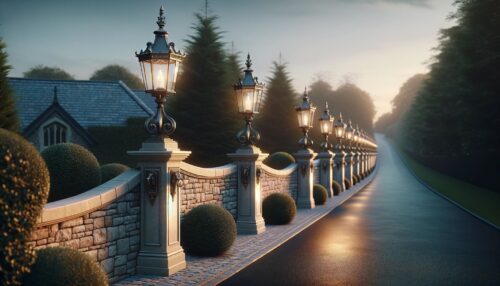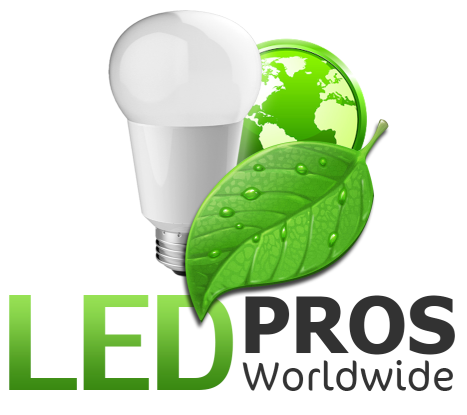Architectural lighting fixtures have become an essential part of modern residential and commercial designs, especially in upscale communities. As property owners and homeowners’ associations focus on enhancing curb appeal and creating sophisticated environments, lighting plays a pivotal role. More than just a source of illumination, these fixtures add character, depth, and personality to a space. Whether it’s sleek modern designs or classic elegance, architectural lighting fixtures provide a perfect balance between form and function.
But how can the right lighting fixtures impact a community? What are the benefits beyond aesthetics? In this guide, we’ll dive deep into the world of architectural lighting fixtures, exploring their significance in upscale communities, how they improve safety, enhance property value, and create a cohesive design that impresses residents and visitors alike.
What Are Architectural Lighting Fixtures?
Architectural lighting fixtures are designed to complement and enhance the design of a building or space. They go beyond traditional lighting, focusing on form, functionality, and aesthetics. Whether used indoors or outdoors, these fixtures are meticulously crafted to highlight architectural features, create ambiance, and offer functional lighting solutions.
Key Characteristics of Architectural Lighting Fixtures:
– Design-centric: These fixtures are meant to blend seamlessly with the architecture and overall design of a building.
– Energy-efficient: Many architectural lighting fixtures, especially those that use LED technology, are designed to be energy-efficient and environmentally friendly.
– Versatile They can be used in various settings, from grand entrances and pathways to intimate garden spaces or sophisticated interiors.
The Importance of Architectural Lighting Fixtures in Upscale Communities
For upscale communities, first impressions matter. Architectural lighting fixtures can elevate the visual appeal of a neighborhood, making it stand out. Here are some reasons why these fixtures are essential:
1. Enhancing Style and Aesthetics
Architectural lighting fixtures help create a cohesive design theme throughout a community. By carefully selecting the right styles, homeowners’ associations (HOAs) and property developers can ensure that the lighting aligns with the architectural theme, whether modern, classic, or a blend of both. Fixtures such as sleek light poles, decorative sconces, and elegant landscape lighting add a touch of sophistication that’s both functional and visually stunning.
– Elegant Design for Upscale Communities: Elegant lighting designs are crucial in upscale neighborhoods. They not only offer better visibility at night but also elevate the overall atmosphere, making the community feel luxurious and exclusive. Read more about Elevating Aesthetics: Homeowners Association Architectural Lighting here.
– Showcasing Architectural Features: The right lighting can highlight the beauty of architectural details, such as columns, archways, or stone facades, giving buildings a unique and dynamic look during the evening.
2. Boosting Property Value
Believe it or not, the right lighting can increase the perceived value of a property. When potential buyers or renters drive through a well-lit community with stylish and cohesive lighting, they associate the neighborhood with safety, luxury, and attention to detail.
– Curb Appeal at Night: Curb appeal isn’t just for daytime. Properly installed architectural lighting fixtures can make a property look just as attractive at night, which is a huge selling point.
– Premium Finishes: Upscale communities often require lighting fixtures with high-end finishes like bronze, copper, or stainless steel, which can further enhance a property’s value.
Energy Efficiency and Sustainability in Modern Lighting
One of the biggest trends in architectural lighting fixtures is the move toward energy-efficient solutions. LED technology has transformed the lighting industry, offering options that reduce energy consumption without compromising on brightness or aesthetics.
3. Why Choose LED Architectural Lighting Fixtures?
– Longer Lifespan: LED fixtures can last up to 50,000 hours or more, which significantly reduces the need for replacements.
– Lower Energy Consumption: LED lights use about 75% less energy compared to traditional incandescent or halogen bulbs.
– Environmentally Friendly: LED fixtures are more sustainable, as they do not contain harmful chemicals like mercury, and they generate less waste due to their longer lifespan.
In upscale communities, using energy-efficient architectural lighting fixtures shows a commitment to sustainability, which is becoming a priority for many homeowners and developers.
 |
Outdoor Lighting: Key Areas for Architectural Fixtures
Outdoor lighting is essential in any community, but in upscale neighborhoods, it’s all about blending functionality with design. Here are key areas where architectural lighting fixtures make a significant impact:
4. Pathways and Walkways
– Safety First: Pathway lighting ensures safe navigation after dark. Using sleek, low-profile fixtures along paths adds elegance while preventing trips and falls.
– Design Continuity: The fixtures used along walkways can tie together the overall design theme of the community.
5. Entrances and Gateways
– Welcoming Ambiance: Entrances to homes or the community itself can benefit from statement architectural lighting fixtures that exude a welcoming and stylish vibe.
– Security: Bright yet aesthetically pleasing fixtures can improve security by deterring intruders and ensuring that entryways are well-lit.
6. Landscaping and Green Spaces
– Showcasing Nature: Architectural lighting fixtures can highlight trees, shrubs, and garden features. Uplighting a large tree, for example, creates an ethereal effect that adds depth to the landscape.
– Elegant Lighting Design for Upscale Communities: Landscape lighting in upscale communities needs to balance subtlety with sophistication. Avoiding harsh lights and opting for gentle, ambient fixtures can create a serene and high-end environment.
Indoor Architectural Lighting for Upscale Residences
While outdoor lighting is crucial for curb appeal and safety, indoor architectural lighting fixtures are just as important for creating luxurious interiors. Here’s how the right lighting choices can transform indoor spaces:
7. Living Areas
– Creating Atmosphere: Chandeliers, recessed lighting, and modern sconces can add a sense of grandeur to living rooms, dining rooms, and other common areas.
– Lighting for Function and Form: Architectural lighting fixtures inside the home often serve a dual purpose—highlighting specific areas while enhancing the overall aesthetic.
8. Kitchens and Bathrooms
– Task Lighting: In upscale residences, kitchens and bathrooms need lighting that is both functional and visually appealing. Fixtures such as under-cabinet LEDs and elegant pendant lights over kitchen islands are popular choices.
– Accentuating Design Elements: Lighting can be used to emphasize marble countertops, high-end appliances, or luxury finishes in bathrooms.
FAQ: Common Questions About Architectural Lighting Fixtures
1. What are architectural lighting fixtures?
Architectural lighting fixtures are designed to enhance the design and functionality of a space by complementing the architectural features. They are both aesthetic and practical, providing illumination while adding a design element to the property.
2. Why are LED lights often used in architectural lighting fixtures?
LED lights are energy-efficient, long-lasting, and environmentally friendly. They offer the same brightness as traditional bulbs while consuming less energy, making them a popular choice for architectural lighting in upscale communities.
3. How do architectural lighting fixtures improve property value?
Well-designed lighting fixtures improve a property’s curb appeal and can make it stand out, especially in upscale communities. Potential buyers or renters are often drawn to well-lit, elegant homes, which can lead to increased property value.
4. What is the best way to light pathways in an upscale community?
The best way to light pathways is with low-profile, elegant architectural lighting fixtures that provide sufficient illumination for safety without overwhelming the space. Using LED path lights ensures energy efficiency while maintaining a cohesive design.
5. How can lighting enhance the style and aesthetics of a community?
Lighting enhances style and aesthetics by highlighting architectural features, creating ambiance, and ensuring that outdoor spaces look as beautiful at night as they do during the day. It’s a key element in upscale communities that value both form and function.
Conclusion
Architectural lighting fixtures are more than just practical tools—they’re a critical part of creating a beautiful, cohesive, and functional environment, especially in upscale communities. Whether illuminating pathways, accentuating landscaping, or enhancing the design of residential interiors, the right lighting fixtures add value, boost security, and elevate style.
By focusing on energy-efficient solutions like LED lights, you not only ensure sustainability but also enhance the overall appeal of a property. When chosen thoughtfully, these fixtures can transform a space from ordinary to extraordinary, leaving a lasting impression on residents and visitors alike. So, whether you’re a homeowner, part of a homeowner’s association, or a property developer, architectural lighting fixtures should be at the top of your design priorities.
